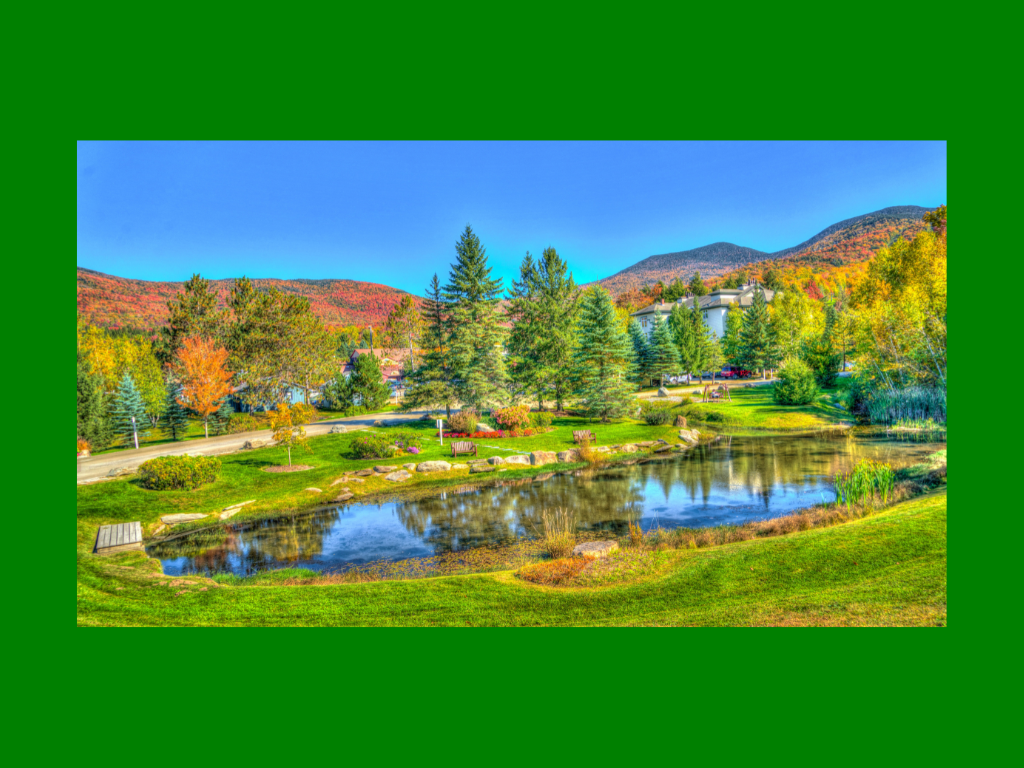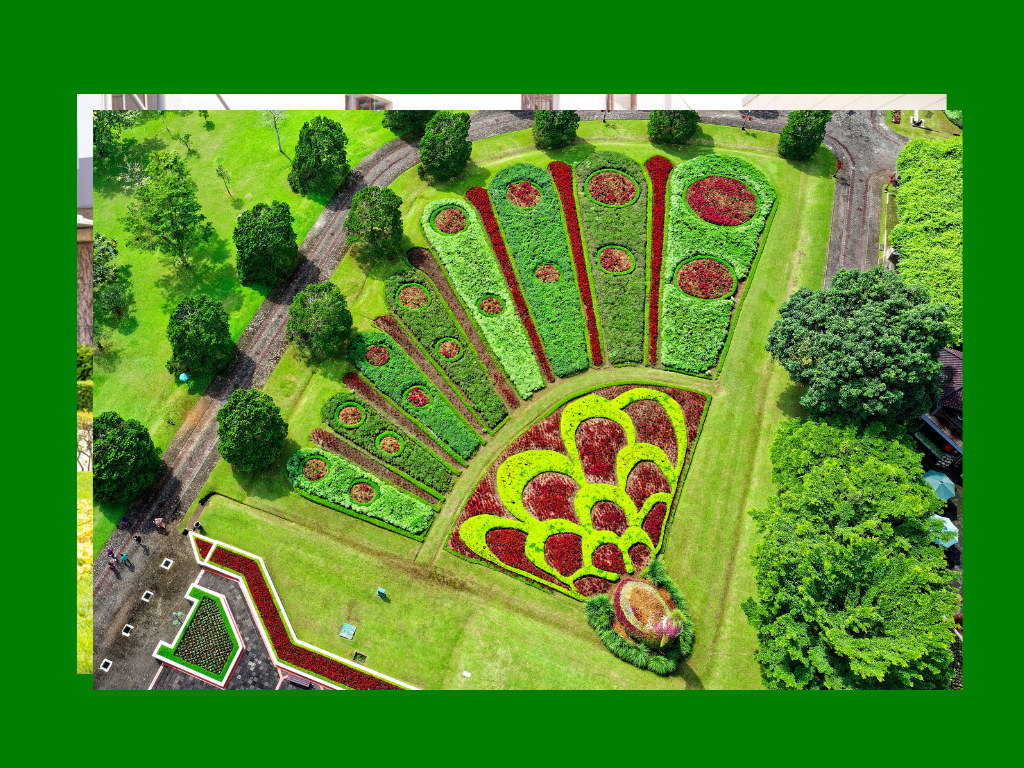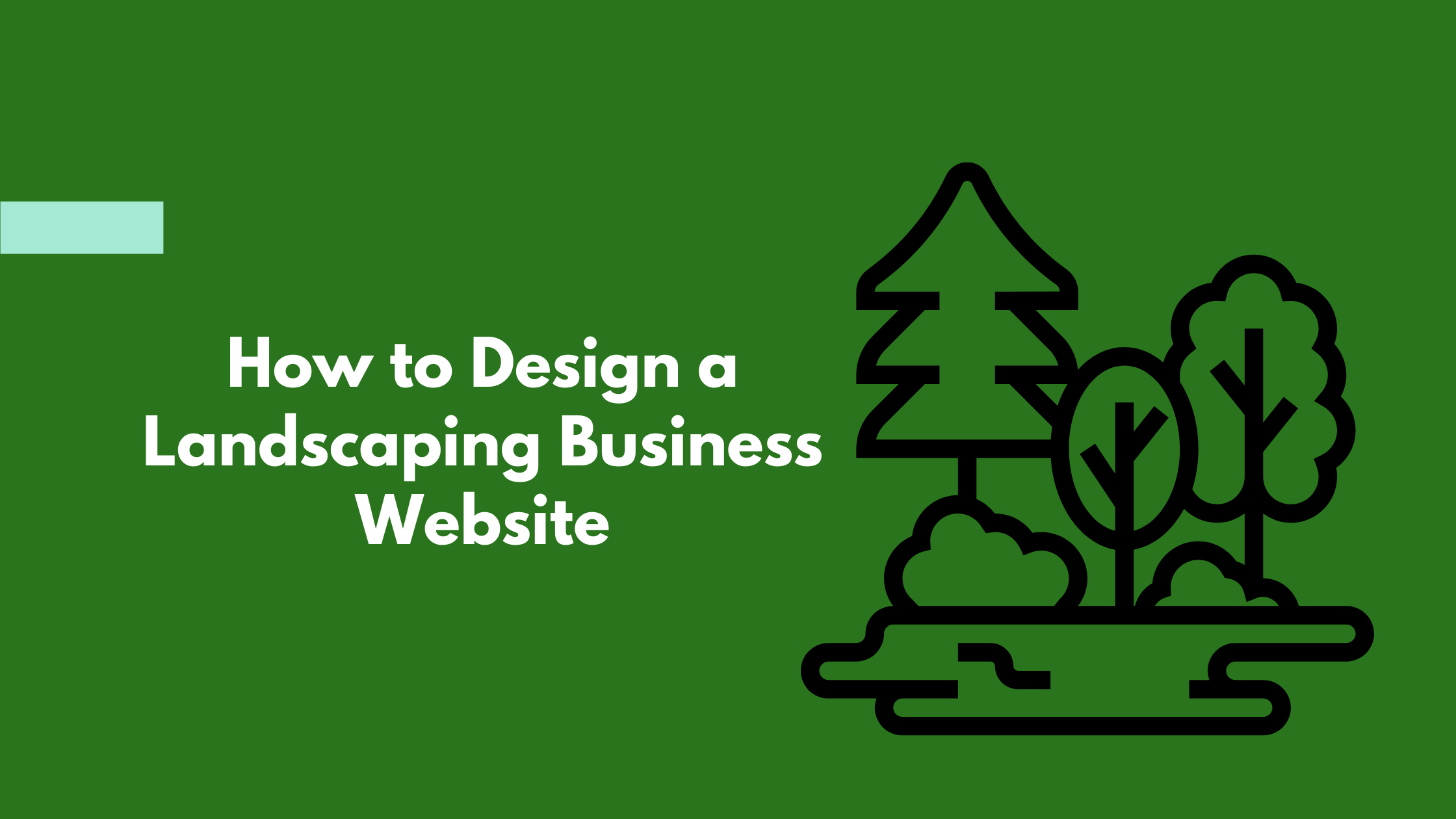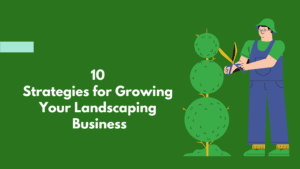Imagine a homeowner scrolling through the internet, looking for a reliable landscaper to transform their backyard. They click on a few websites but quickly leave because they’re outdated, slow, or lack clear information.
Then, they land on a sleek, visually stunning site that showcases beautiful before-and-after photos, clear service descriptions, and a simple way to request a quote. Which business do you think they’ll choose?
Your website is often the first impression potential clients have of your landscaping business. If it doesn’t capture their attention within seconds, you could be losing leads to competitors. That’s why how to design a landscaping business website matters. It’s not just about aesthetics but also functionality, user experience, and conversion strategy.
A well-designed website for landscaping business builds trust, attracts high-quality leads, and sets the foundation for long-term business growth. Whether you’re creating a new website or revamping an existing one, this guide will show you exactly how to make a website for landscaping services that works for you and not against you.
Table of Contents
Understanding Your Target Audience and Their Needs
A successful website for a landscaping business owner starts with a deep understanding of their target audience. Landscaping services cater to different audiences, and knowing your ideal client helps shape your website’s content, layout, and design.
Think about your typical customer. Are they busy homeowners looking for regular lawn maintenance? Do they need a complete backyard transformation with patios, fountains, and lush greenery? Maybe you work with commercial clients who need large-scale landscaping services for office parks or apartment complexes. Each audience has different priorities, and your website should reflect that.
If you’re targeting homeowners, your website should feel warm, welcoming, and visually appealing. Before-and-after photos of past projects, customer testimonials, and blog posts on seasonal lawn care tips can help build trust. If you primarily serve commercial clients, your website should emphasize professionalism, efficiency, and large-scale project expertise.
Choosing the Right Website Platform for a Professional Look
Once you’ve identified your audience, the next step is choosing the right platform for your website. A good platform ensures your site is easy to manage, looks professional, and is optimized for search engines.
Many landscaping businesses opt for WordPress because of its flexibility, customization options, and SEO-friendliness. Wix and Squarespace are also great for smaller businesses that need a simple yet effective online presence.
But if you want a fully customized site with high performance and seamless user experience, working with a professional landscaping services website design team is the best choice. A professionally built website ensures your brand stands out and attracts more clients.
Designing a Homepage That Instantly Captivates Visitors
Your homepage is your digital storefront. When a visitor lands on your site, they should immediately understand who you are, what you do, and why they should choose you.
A strong website for landscaping business owners includes:
- A strong headline that clearly states what your business offers
- A high-quality image or video showcasing your best work
- A call-to-action (CTA) like “Get a Free Estimate” or “Transform Your Landscape Today”
- Brief sections highlighting your services, portfolio, and testimonials
The homepage should also be easy to navigate, with clear menus that guide visitors to the most important pages. When considering how to design a landscaping business website, prioritize simplicity because too much clutter overwhelms visitors and drives them away.

Creating Service Pages That Convert Visitors Into Clients
Your services page is where potential clients go to learn exactly what you offer. Instead of listing generic services, take the time to explain each one in detail.
For example, instead of just saying “Lawn Care,” expand on what that includes: mowing, fertilizing, aeration, weed control, and seasonal maintenance. If you offer hardscaping, describe how you design and install patios, retaining walls, and outdoor kitchens.
Each service should have its own section with supporting visuals. A well-structured landscaping services website design ensures that visitors don’t have to guess what you offer, they get all the details upfront.
Showcasing Your Work with a Stunning Portfolio Page
Landscaping is a visual industry. People want to see real-life examples of your work before hiring you. A strong portfolio page builds trust and convinces clients you’re the right choice.
Your portfolio should include:
- High-quality images of completed projects
- Before-and-after comparisons
- A description of each project, explaining the client’s needs and how you delivered results
- Video walkthroughs or drone footage for an immersive experience
When planning how to design a landscaping business website, make your portfolio page easy to navigate. Organize projects into categories like residential, commercial, and specialty landscaping so visitors can quickly find relevant work.
Using SEO to Rank Higher and Attract More Clients
Even the best-designed website won’t generate leads if people can’t find it. That’s why search engine optimization (SEO) is a crucial part of your website strategy.
SEO starts with keyword optimization. Your website should naturally incorporate phrases like landscaping services website design, how to make a website for landscaping services, and website for landscaping business. These keywords should appear in headings, page content, image alt texts, and meta descriptions.
Other SEO strategies include creating blog content that answers common landscaping questions, optimizing images for fast loading speeds, building backlinks from reputable industry websites, and setting up and optimizing your Google My Business profile.
When you rank higher on Google, it means more organic traffic, and more traffic leads to more business.
Integrating Lead Generation Features for More Bookings
A well-designed website for landscaping business doesn’t just attract visitors, it converts them into leads. That’s why clear calls to action (CTAs) should be placed throughout your site.
Instead of generic CTAs like “Contact Us,” use persuasive phrases like “Get a Free Quote Now” or “Let’s Design Your Dream Landscape Today”. Make it easy for visitors to take the next step by including a simple contact form, live chat, or a click-to-call button.
Contact forms should be simple. The fewer fields, the better. Asking only for a name, email, and brief message increases the chances of people filling it out. Live chat increases conversions. Many potential clients have quick questions, and an instant chat feature allows you to address their concerns immediately.
Also, offering incentives encourages action. A free consultation, discount for first-time clients, or downloadable landscaping guide can push visitors to engage with your business.
Building Trust with Testimonials and Certifications
People trust other people’s experiences more than anything you say about yourself. That’s why customer testimonials are so powerful. A testimonials page filled with positive client reviews reassures potential customers that you deliver great results.
Displaying industry certifications, awards, and affiliations adds another layer of credibility. If you’re certified by a landscaping association or have won local business awards, make sure to highlight them on your site.

Leveraging Social Media and Content Marketing
Your website and social media should work together to boost your online presence. Embedding your Instagram or Facebook feed keeps your site fresh and shows visitors your latest work.
Blogging also plays a huge role in your landscaping business website ranking on Google. Writing about seasonal landscaping tips, lawn care guides, and outdoor design trends attracts visitors and establishes your expertise.
Regular Maintenance and Updates to Keep Your Website Fresh
A website isn’t a one-time project, it’s an ongoing tool for growing your business. Regular updates keep it relevant and high-performing.
Schedule monthly website checkups with us at Texttot Digital to update content, fix broken links, and add new portfolio photos. Always refresh your blog with new articles and make sure your contact forms and CTAs are still effective.
Final Thoughts
A website for landscaping business that attracts and converts clients takes strategy, creativity, and consistency. From crafting a compelling homepage to optimizing for SEO and integrating lead generation tools, every detail matters.
A high-performing website sets you apart from competitors, builds trust with potential clients, and drives more bookings. If you want a website that truly works for your business, Texttot Digital specializes in landscaping services website design that is both visually stunning and results-driven.
Ready to grow your landscaping business online? Contact us today and let’s build a website that turns visitors into loyal clients.


